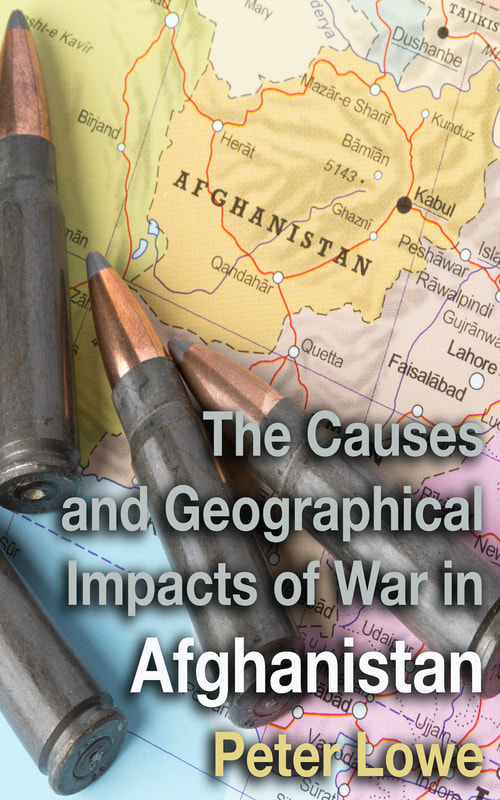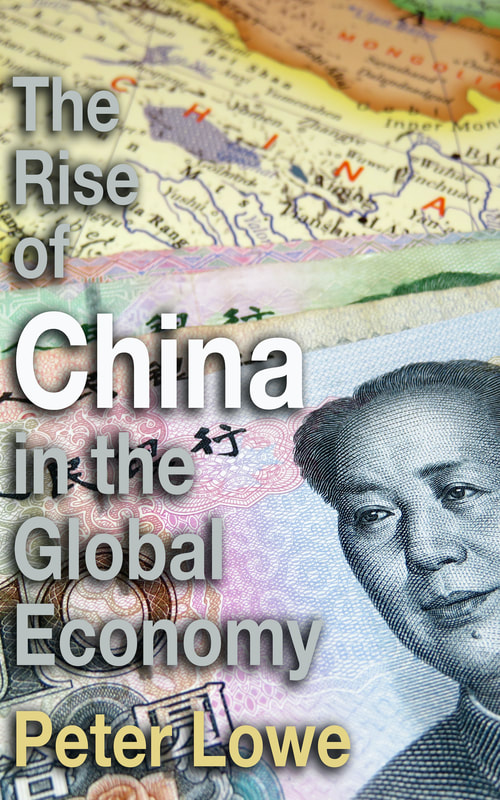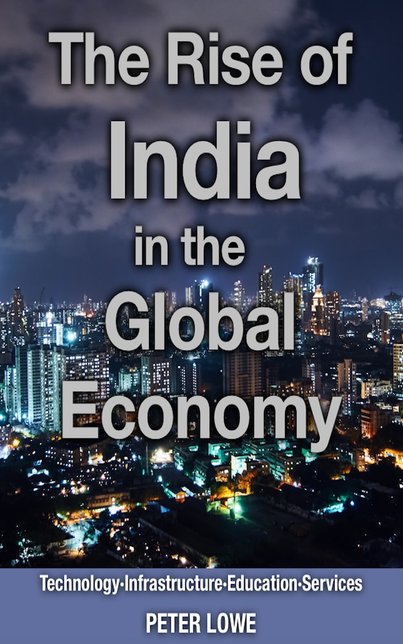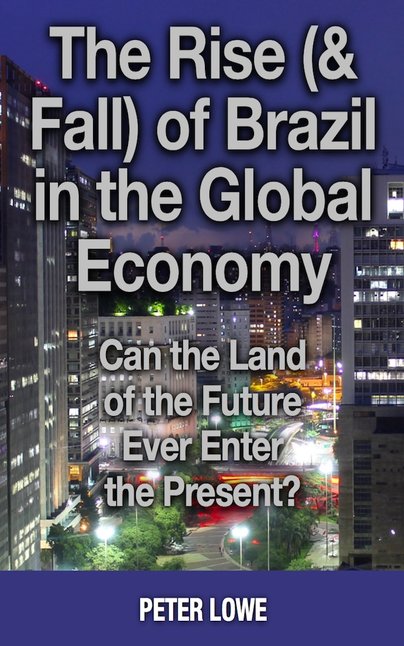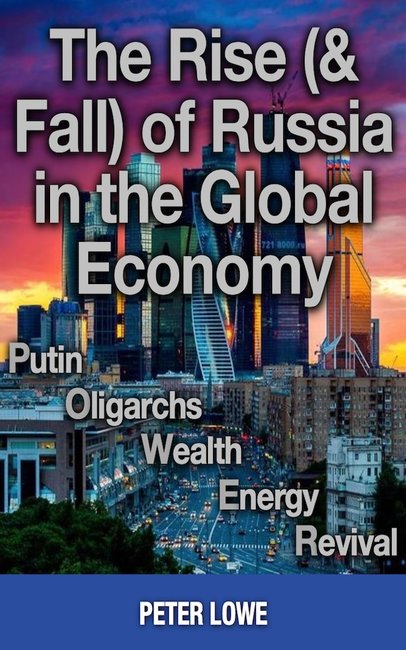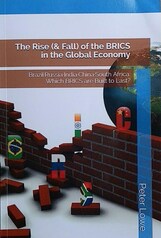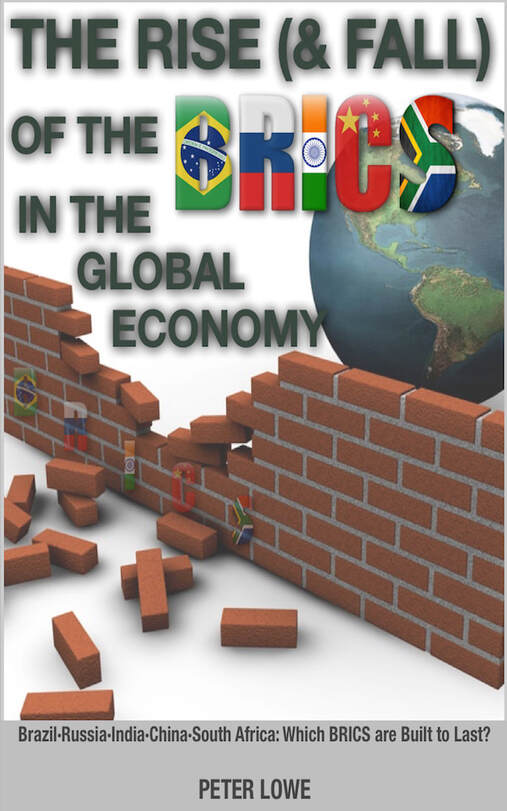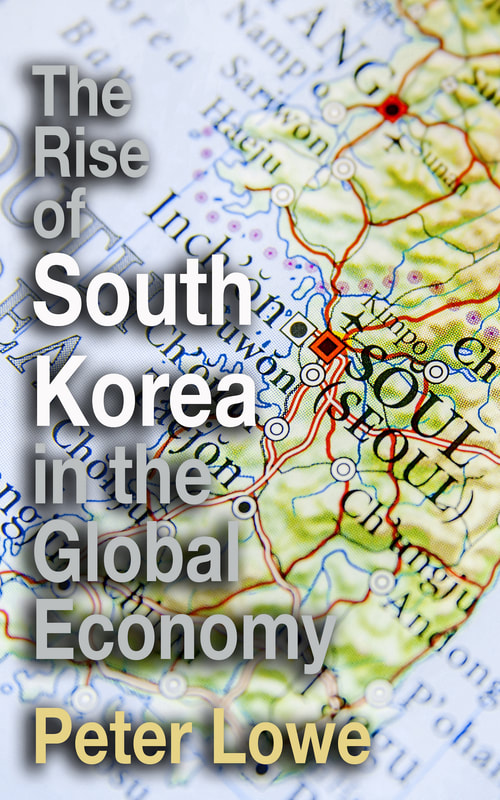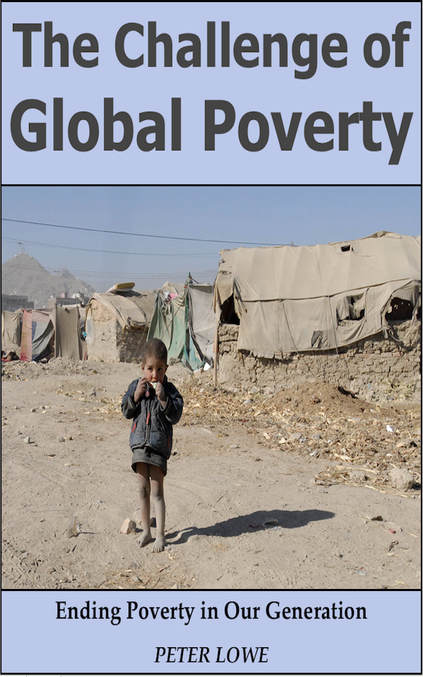These Kindle Books are in standard format and can be viewed on any Kindle, as well as on computers and mobile devices via the Kindle App. Some titles are also available through Kindle Unlimited and the Kindle Owners’ Lending Library.
They have been produced to support A Level & IB Geography teachers and students. In addition, they will be of relevance to many others with an interest in national or international conflicts, development and poverty issues, the emergence of new economic powers, and the globalisation of the world economy.
They have been produced to support A Level & IB Geography teachers and students. In addition, they will be of relevance to many others with an interest in national or international conflicts, development and poverty issues, the emergence of new economic powers, and the globalisation of the world economy.
|
Transnational & Multinational Corporations in the Global Economy: Globalisation and the Impacts of TNCs & MNCs for A Level & IB Geography
(KINDLE eBOOK) (PAPERBACK AVAILABLE) (Published in June 2020). This book examines the factors behind the growth of transnational corporations (TNCs) and multinational corporations (MNCs), and how they have become a major force in the increasing interdependence of national economies through their role in international trade, investment and capital. TNCs & MNCs have undoubtedly become key players in the process of globalisation, and vital to the economic development of emerging economies during recent decades. Yet, the geography of their ownership is also changing. The domination of the USA and Europe, as home to the world’s largest companies is being challenged by the emergence of powerful corporations from the newly industrialised countries of Asia, particularly South Korea, India and China. The activities of TNCs & MNCs inevitably lead to significant economic, social and environmental consequences for their host countries, as well as on their own country of origin. Both positive and negative impacts are assessed, while case studies of Apple, BP and Dyson provide additional detailed examination of the characteristics, spatial organisation, growth and impacts of three global corporations. Although they differ in their history and geographical origins, product lines and scale of operations, they share a number of common features with each other, particularly in how their growth has facilitated and exploited the opportunities arising from the process of globalisation. Nevertheless, TNCs & MNCs are not all-powerful. They too can be affected by global events outside their control, illustrated most recently by the economic fallout from worldwide lockdowns. History also suggests that, in the battle for power and influence over economies, large corporations are frequently vulnerable to unpredictable decisions from governments; including sudden tax rises, the removal of ‘licences’ or even the expropriation of their assets. |
4th Edition published in June 2020 (eBook)
1st Edition published in June 2020 (Paperback) |
|
10th Edition published in April 2020 (eBook)
2nd Edition published in April 2020 (Paperback) |
The Causes and Geographical Impacts of War in Afghanistan: The Taliban & Afghanistan's Unwinnable War for A Level & IB Geography
(KINDLE eBOOK) (PAPERBACK AVAILABLE) (Published in April 2020). This book investigates the nature and origin of the highly destructive conflict in Afghanistan, involving both civil and international war, which has been an ongoing feature of the country since the Soviet invasion of 1979. It examines the anti-Soviet struggle of the 1980s, the vicious civil war and emergence of the Taliban in the 1990s, as well as the 2001 US-led invasion to remove al-Qaeda and the Taliban from Afghanistan. However, success in overcoming the Taliban was short-lived. The Taliban were quick to regroup, and have maintained an effective insurgency movement ever since, despite the costly efforts of the international coalition to suppress them. The book examines the reasons for the Taliban’s unrelenting strength, and follows the country’s ongoing struggle for stability and peace since the withdrawal of the majority of coalition troops in 2014, including the emerging threat from Islamic State. Decades of conflict have had horrific effects on the lives of Afghanistan’s civilians, the economic and social development of the country and the state of its environment. At the same time, war has taken a heavy toll on the many forces involved in the fighting, with repercussions that go far beyond Afghanistan’s borders. Therefore, the book examines the consequences of the war, in terms of the resulting economic, social and environmental legacy for Afghanistan and the international players in the conflict. |
The Apple Books version was Highly Commended by the judges at the Geographical Association Publishers' Awards 2014
|
The Rise of China in the Global Economy: The Causes & Consequences of China’s Economic Growth for A Level & IB Geography
(KINDLE eBOOK) (PAPERBACK AVAILABLE) (Published in May 2020). This book examines how China has emerged from economic ruin to become one of the world’s economic giants. This vast nation has shaken off the legacy of old-style communism, to rise to a position that threatens to overhaul the existing world order. Despite enduring a bumpy ride in recent years, China remains the most important driver of world economic growth. Trade and technology tensions with the US and the economic fallout from the global lockdown during 2020 have tested China’s economic and political resilience. Therefore, whether China can sustain its spectacular economic transformation, and join the club of advanced economies, remains to be seen. For China’s citizens, economic growth has brought about rising living standards, but the coastal provinces have enjoyed far more of the riches than the interior. The result is that China has lost its status of being one of the most equal places in the world. Furthermore, despite the economic liberalisation policies of the ruling Communist Party, secrecy and censorship still prevail in the country, meaning far less political freedom for the country’s 1.4 billion people. To add to their woes, China’s obsession with economic growth has been to the detriment of its own environment, and in many cases the health of its citizens. |
8th Edition published in May 2020 (eBook)
2nd Edition published in May 2020 (Paperback) |
|
The Rise of India in the Global Economy: Technology ·Infrastructure· Education·Services
(KINDLE eBOOK) (v3 published in December 2017). This book examines India’s progress towards becoming a major player in the global economy. The country appears to have two personalities. The less endearing, but all too common side of India, is visible through the country’s poverty, corruption, congestion and bureaucracy. On the other hand, India has an increasingly educated, entrepreneurial and youthful population, with the ability to exploit new technological developments. It has made considerable progress in re-positioning its economy from agricultural to service-based, and consequently its economy has grown rapidly since the early 1990s, helping the country to shake off the perception of being under-developed. India is now a lower middle-income country, and is emerging as one of the most influential newly industrialised countries of the 21st century. However, despite its fast-paced growth and the enormous potential it possesses to continue its economic and social transformation, India faces a number of significant challenges that may hinder its ability to reach the wealth level of the world’s advanced economies. |
|
The Rise (& Fall) of Brazil in the Global Economy: Can the Land of the Future Ever Enter the Present?
(KINDLE eBOOK) (v4 published in December 2017). This book examines Brazil’s attempts since the 1960s to break out of its Latin American regional power base, and become a true global power. Its economy has enjoyed some spectacular success in recent decades, yet every promising period of economic growth has been followed by decline or stagnation. The hosting of the 2014 World Cup and 2016 Summer Olympics were clear signs that Brazil had regained its confidence, and wished to be taken seriously as a major player on the world economic stage. However, the recent nose-dive of the Brazilian economy, as well as its ongoing political crisis, suggest yet another false dawn for this upper middle-income country. Only time will tell if Brazil’s ambitions to become a powerhouse of the global economy can realistically be achieved. |
|
The Rise (& Fall) of the BRICS in the Global Economy: Brazil Russia India China South Africa: Which BRICS are Built to Last?
(KINDLE eBOOK) (PAPERBACK AVAILABLE) (v6 published in December 2017). This book examines how the BRICS have emerged as potentially potent forces in the global economy, and the reasons behind their economic rise. China has become a dominant global supplier of manufactured goods, while India has emerged as a key global provider of services. Brazil and Russia have become major global exporters of raw materials, resources that China and India require for their industrialisation. South Africa has a diversified economy, and is regarded as a low-risk destination for investment in Africa. The emergence of the BRICS signals a shift in economic and political power away from the advanced economies of the West. A close ‘alliance’ between the BRICS countries could further increase their geopolitical stature, leading to significant changes in the current world order. However, China is the real power in the BRICS group, and rivalry with the other BRICS, due to their overlapping spheres of influence, may create future tensions that prevent a new powerful grouping. Weak global demand for commodities in recent years has contributed to stalled economies in Brazil, Russia and South Africa, while unprecedented investment levels in China have led to concerns over its rising public and private debt. India’s rapidly growing population and considerable rural poverty are problematic for its future development. These obstacles may thwart their individual global ambitions, as well as the BRICS group to take centre stage in tomorrow’s global economy. 6th Edition published in December 2017 (Paperback)
|
6th Edition published in December 2017 (eBook)
|
The Apple Books version of was Highly Commended by the judges at the Geographical Association Publishers' Awards 2015
|
The Rise of South Korea in the Global Economy: The Causes & Consequences of South Korea’s Economic Growth for A Level & IB Geography
(KINDLE eBOOK) (PAPERBACK AVAILABLE) (v11 published in February 2021). This book examines South Korea’s emergence as an economic power, since the devastating economic ruin created by the Korean War of 1950-1953. As one of the original 'Asian Tigers', its economic transformation has been nothing short of remarkable. The country has overcome every setback, including its humiliating financial crisis of the late 1990s, to reach its position, today, as a major force on the global economic stage. The challenge for this relatively small country is how to ensure it stays ahead of the competition in today’s increasingly multipolar world order. In particular, the rise of the BRICS economies is already creating both challenges and opportunities for South Korea's leaders and entrepreneurs. At home, its powerful chaebols have increasingly been perceived as a symbol of the out-of-touch elite, and have become a target of public anger in recent corruption scandals. Yet, an even more sinister threat to its economic growth will arise from any return to hostilities with its unpredictable neighbour, North Korea. |
|
The Challenge of Global Poverty: Ending Poverty in Our Generation
(KINDLE eBOOK) (v3 published in November 2016). This book examines the causes, characteristics and distribution of extreme poverty in the world today, and the international responses to address the problem of poverty. Tackling extreme poverty was the first Millennium Development Goal set by the United Nations in 2000, and the target of reducing it by half was met 5 years ahead of the 2015 deadline. Yet, at least 700 million people continue to suffer from extreme poverty, and billions more survive just above the ‘poverty line’. Despite the apparent success of international action in poverty reduction, the figures are skewed by the economic progress of China and India. In Africa, progress in reducing extreme poverty has been much slower. Case studies of Bangladesh, Zimbabwe, DR Congo and Afghanistan illustrate the factors operating over time that have set the ‘poverty trap’ for millions of their citizens, the progress made with poverty reduction, and the challenges that still have to be overcome. With the deadline date for the MDGs now passed, the UN has set an even more ambitious set of goals, the Sustainable Development Goals, including a new target of ending extreme poverty everywhere by 2030. The challenge of ‘ending poverty in our generation’ will be much harder to achieve than that of MDG1. |
|
The Causes and Consequences of the Basque Separatist Conflict in Spain: ETA, Terrorism & the Basque Conflict
(KINDLE eBOOK) (v4 published in April 2017). The Basque separatist conflict has involved a long period of hostility between the Basque people of northern Spain and the Spanish government. The repressive anti-Basque policies of Spain’s fascist dictator, General Franco, brought the conflict to a new level, and in 1959 an insurgency movement was mobilised by Euskadi Ta Askatasuna (ETA), a separatist militant organisation which fought to create an independent Basque State straddling northern Spain and south-west France. This book examines the nature and origin of this separatist conflict, and provides an insight into the consequences of the armed struggle that lasted more than 50 years, and was characterised by acts of violence from both sides. It also looks at the progress towards peace since ETA announced a 'definitive' end to armed struggle in 2011. It remains to be seen whether the violence associated with Basque grievances has finally ended. |

UK 
US 
AU 
ES 
FR 
DE |
|
The Causes and Consequences of Separatist Conflict in Sri Lanka: Tamil Tigers & the Killing Fields of Sri Lanka
(KINDLE eBOOK) (v5 published in November 2016). This book examines the nature and origin of the Tamil separatist conflict in Sri Lanka, involving hostilities between the Liberation Tigers of Tamil Eelam (Tamil Tigers) and the Sri Lankan government. It provides an insight into the causes, and tragic consequences, of the 26 year long civil war that was characterised by extreme violence, particularly during the final months. Allegations of war crimes, and crimes against humanity, have been made against both the Tamil Tigers and the Sri Lankan government, following revelations about the scale of the ‘massacre in the safe-zone’. Meanwhile, the UN’s decision to leave the war zone, during the latter stages of the conflict, has also come in for fierce criticism. |

UK 
US 
DE 
AU 
IN |







